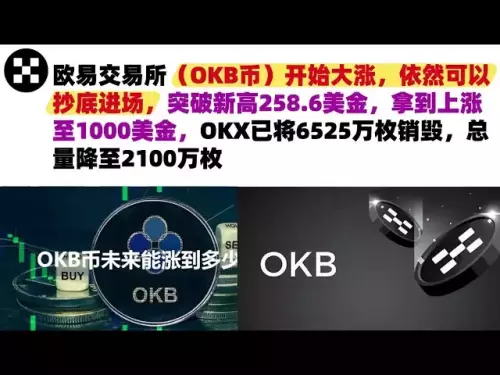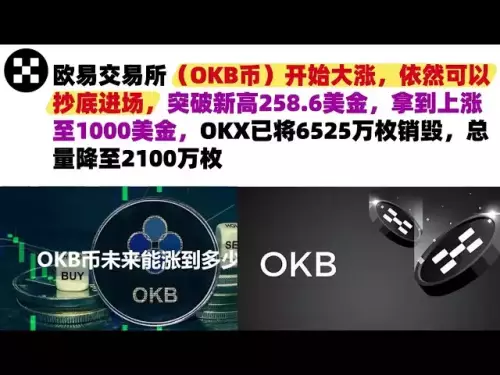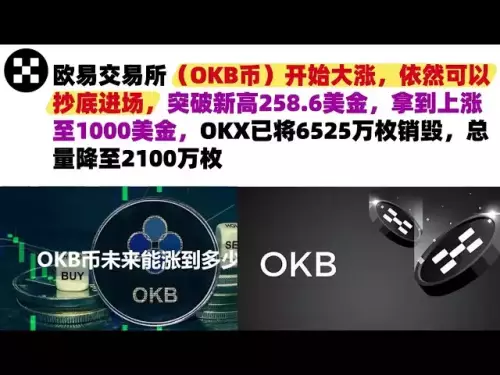-
 Bitcoin
Bitcoin $108400
-1.32% -
 Ethereum
Ethereum $4391
1.18% -
 Tether USDt
Tether USDt $1.000
0.01% -
 XRP
XRP $2.803
-2.47% -
 BNB
BNB $859.6
0.44% -
 Solana
Solana $202.4
-2.36% -
 USDC
USDC $0.9999
0.01% -
 Dogecoin
Dogecoin $0.2155
0.43% -
 TRON
TRON $0.3403
0.66% -
 Cardano
Cardano $0.8296
0.60% -
 Chainlink
Chainlink $23.36
-0.37% -
 Hyperliquid
Hyperliquid $43.42
-2.30% -
 Ethena USDe
Ethena USDe $1.001
0.00% -
 Sui
Sui $3.319
0.41% -
 Stellar
Stellar $0.3575
-1.97% -
 Bitcoin Cash
Bitcoin Cash $535.6
-0.02% -
 Cronos
Cronos $0.3170
5.52% -
 Avalanche
Avalanche $23.57
-0.92% -
 Hedera
Hedera $0.2256
-1.19% -
 UNUS SED LEO
UNUS SED LEO $9.505
-1.17% -
 Litecoin
Litecoin $110.6
0.45% -
 Toncoin
Toncoin $3.096
1.26% -
 Shiba Inu
Shiba Inu $0.00001238
1.49% -
 Uniswap
Uniswap $9.745
1.41% -
 Polkadot
Polkadot $3.788
-0.35% -
 Dai
Dai $0.9999
0.00% -
 Bitget Token
Bitget Token $4.546
-0.17% -
 Monero
Monero $266.0
1.43% -
 Aave
Aave $315.5
2.14% -
 Ethena
Ethena $0.6714
2.27%
Coinbase to Ledger: How to Securely Move Your Assets
Transferring crypto from Coinbase to a Ledger wallet enhances security and control, marking a shift toward true financial sovereignty through self-custody.
Aug 30, 2025 at 09:18 am
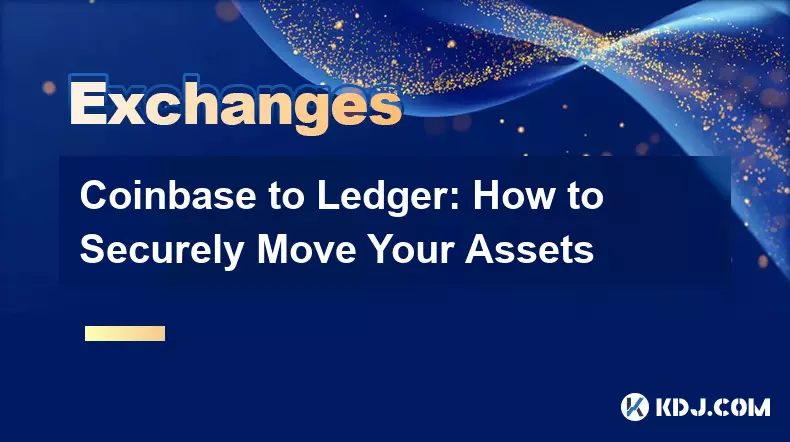
Understanding the Importance of Self-Custody
1. When holding digital assets on centralized exchanges like Coinbase, users do not fully control their private keys. This means the exchange technically holds custody of the funds, exposing users to risks such as platform hacks, regulatory seizures, or operational failures.
2. Transferring assets to a Ledger hardware wallet shifts control from a third party to the individual. A Ledger device stores private keys offline, significantly reducing exposure to online threats like phishing, malware, and remote hacking attempts.
3. Self-custody empowers users with full responsibility over their crypto. While this increases security, it also demands careful management of recovery phrases and device integrity. Losing access to the recovery phrase typically results in permanent loss of funds.
4. Ledger wallets support a wide range of cryptocurrencies and tokens, making them a versatile option for consolidating assets from multiple platforms. Integration with Ledger Live allows users to manage balances, approve transactions, and verify addresses securely.
5. The move from Coinbase to Ledger is not just a technical transfer—it represents a philosophical shift toward financial sovereignty. Users who prioritize control and long-term security often consider hardware wallets essential tools in their crypto strategy.
Step-by-Step Transfer Process
1. Before initiating any transfer, ensure the Ledger device is genuine, purchased directly from the official website, and set up using a secure environment. During setup, write down the 24-word recovery phrase and store it in a physically secure location—never digitally.
2. Install the Ledger Live application on a trusted computer or mobile device. Connect the Ledger via USB, unlock it with the PIN, and navigate to the desired cryptocurrency app (e.g., Bitcoin, Ethereum) within the device interface.
3. Open the corresponding app in Ledger Live and generate a receiving address. Double-check that the address displayed on the Ledger screen matches the one shown in the software. This prevents man-in-the-middle attacks or address manipulation by malware.
4. Log in to the Coinbase account and navigate to the portfolio section. Select the asset to transfer and choose the “Send” option. Paste the Ledger-generated address carefully, ensuring no characters are altered or omitted.
5. Confirm the transaction on Coinbase, paying attention to network fees and estimated confirmation times. Once broadcast, the transaction can be tracked via a blockchain explorer using the transaction ID. Do not disconnect the Ledger until the process is complete.
Security Best Practices During Transfer
1. Always verify the receiving address on the Ledger’s physical screen before confirming the transaction on Coinbase. Malware can alter clipboard data or swap addresses during copy-paste operations.
2. Initiate small test transfers before moving large amounts. Send a minimal quantity first to confirm the funds arrive correctly and can be viewed in Ledger Live. This minimizes risk in case of address errors or compatibility issues.
3. Avoid public Wi-Fi or shared devices when managing transfers. Use a dedicated, updated device with antivirus software and a firewall enabled to reduce exposure to keyloggers or screen capture tools.
4. Ensure the Coinbase account has two-factor authentication (2FA) enabled, preferably using a hardware key or authenticator app instead of SMS, which is vulnerable to SIM-swapping attacks.
5. After the transfer, review transaction history on both Coinbase and Ledger Live. Confirm the balance update and retain transaction IDs for record-keeping. If discrepancies arise, contact Ledger support with verified proof of the on-chain transaction.
Frequently Asked Questions
Can I transfer NFTs from Coinbase to Ledger?Yes, but the process depends on the blockchain. For Ethereum-based NFTs, use a compatible wallet interface like MetaMask connected to Ledger Live. Transfer the NFT to the Ledger-controlled address through the NFT marketplace or wallet platform.
What happens if I send the wrong asset to my Ledger?Ledger wallets are multi-asset but address formats vary. Sending an incompatible token (e.g., BEP-20 to an ERC-20 address) may result in loss. Always confirm asset compatibility and network type before initiating transfers.
Is it safe to reuse a Ledger receiving address?While technically possible, reusing addresses reduces privacy and increases tracking risks. Generate a new address for each transaction to enhance anonymity and security.
Can Ledger recover my funds if I lose the device?No. Ledger does not store recovery phrases or have access to user funds. As long as the 24-word phrase is preserved, funds can be restored on another Ledger or compatible wallet device.
Disclaimer:info@kdj.com
The information provided is not trading advice. kdj.com does not assume any responsibility for any investments made based on the information provided in this article. Cryptocurrencies are highly volatile and it is highly recommended that you invest with caution after thorough research!
If you believe that the content used on this website infringes your copyright, please contact us immediately (info@kdj.com) and we will delete it promptly.
- DeFi's Golden Age: How Polygon's USDT/XAU Integration Ushers in a New Era
- 2025-08-30 17:05:12
- Plasma, EtherFi, and Stablecoin Yields: A New Era of DeFi?
- 2025-08-30 16:45:21
- Remittix (RTX): The Real-World Utility Kingpin and Its Market Positioning in 2025
- 2025-08-30 17:25:15
- Succinct, Institutional Liquidity, and Strategic Investment: Decoding the Future of Blockchain
- 2025-08-30 16:45:21
- Dogecoin, BONK, and the Price Dip Tango: What's Shakin'?
- 2025-08-30 17:30:12
- XRP, Institutional Adoption, and Treasury Yield: A New Era?
- 2025-08-30 17:30:12
Related knowledge

How to trade a new coin listing on Binance?
Aug 29,2025 at 11:14am
Understanding the Pre-Listing Phase1. Research the project thoroughly before any listing announcement. Whitepapers, team backgrounds, and community se...

How to trade with USDT on Binance?
Aug 30,2025 at 02:19am
Getting Started with USDT Trading on Binance1. Create and verify your Binance account. Visit the official Binance website and complete the registratio...
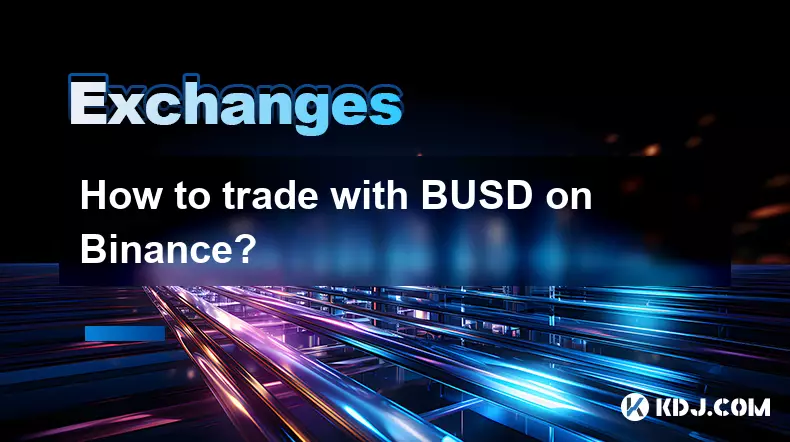
How to trade with BUSD on Binance?
Aug 30,2025 at 07:42am
Understanding BUSD and Its Role in Binance Trading1. BUSD, or Binance USD, is a stablecoin pegged to the value of the U.S. dollar, meaning 1 BUSD is a...
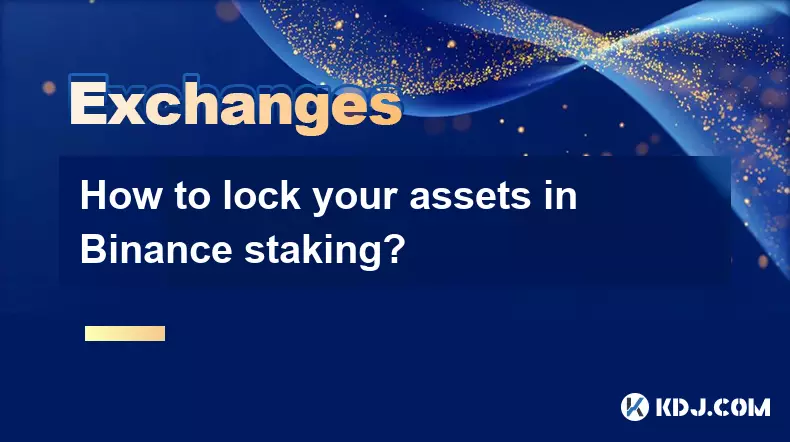
How to lock your assets in Binance staking?
Aug 30,2025 at 01:37pm
Understanding Binance Staking Options1. Binance offers multiple staking products including Locked Staking, DeFi Staking, and Liquid Staking. Each prod...
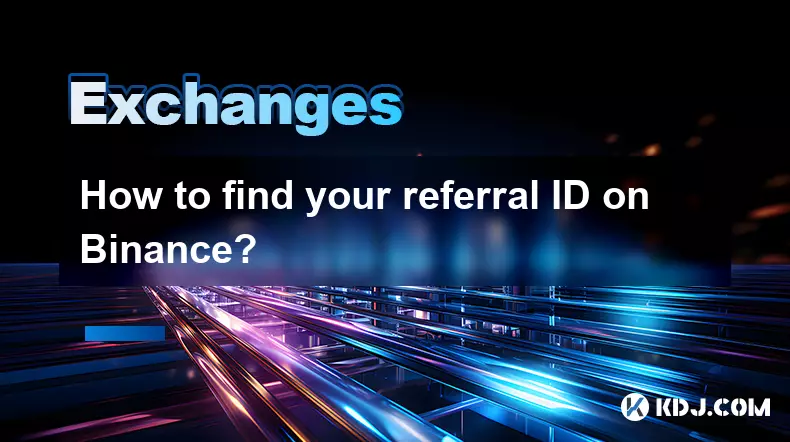
How to find your referral ID on Binance?
Aug 30,2025 at 12:18am
Understanding the Importance of a Referral ID on Binance1. A referral ID on Binance is a unique identifier assigned to each user who participates in t...
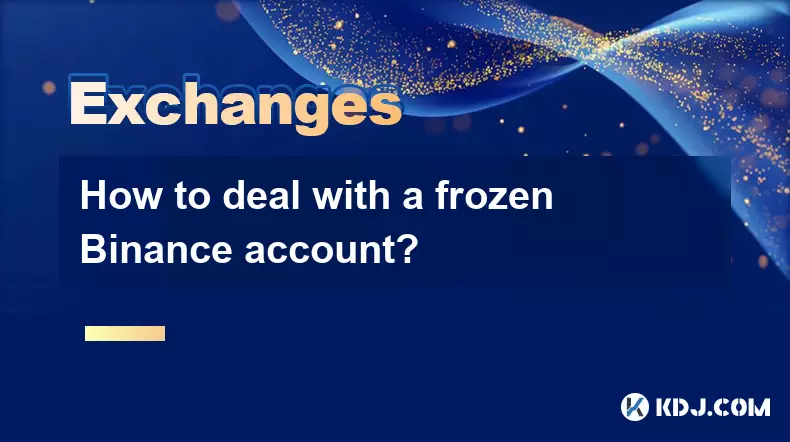
How to deal with a frozen Binance account?
Aug 30,2025 at 05:52am
Understanding the Reasons Behind a Frozen Binance Account1. Accounts on Binance may be frozen due to security concerns, especially after unusual login...

How to trade a new coin listing on Binance?
Aug 29,2025 at 11:14am
Understanding the Pre-Listing Phase1. Research the project thoroughly before any listing announcement. Whitepapers, team backgrounds, and community se...

How to trade with USDT on Binance?
Aug 30,2025 at 02:19am
Getting Started with USDT Trading on Binance1. Create and verify your Binance account. Visit the official Binance website and complete the registratio...

How to trade with BUSD on Binance?
Aug 30,2025 at 07:42am
Understanding BUSD and Its Role in Binance Trading1. BUSD, or Binance USD, is a stablecoin pegged to the value of the U.S. dollar, meaning 1 BUSD is a...

How to lock your assets in Binance staking?
Aug 30,2025 at 01:37pm
Understanding Binance Staking Options1. Binance offers multiple staking products including Locked Staking, DeFi Staking, and Liquid Staking. Each prod...

How to find your referral ID on Binance?
Aug 30,2025 at 12:18am
Understanding the Importance of a Referral ID on Binance1. A referral ID on Binance is a unique identifier assigned to each user who participates in t...

How to deal with a frozen Binance account?
Aug 30,2025 at 05:52am
Understanding the Reasons Behind a Frozen Binance Account1. Accounts on Binance may be frozen due to security concerns, especially after unusual login...
See all articles























